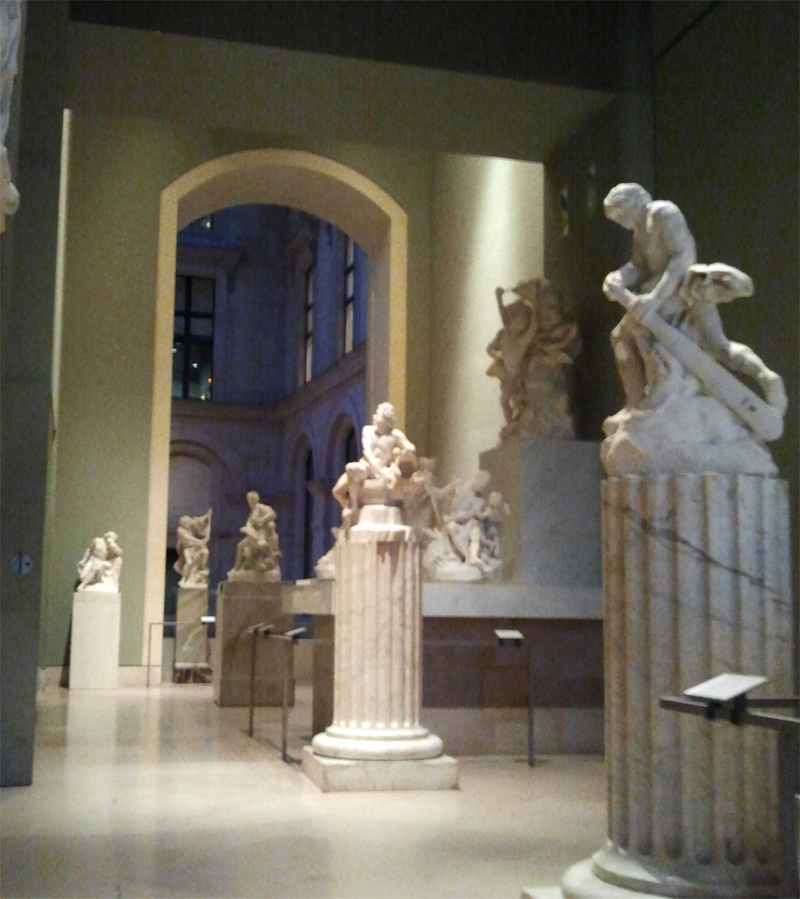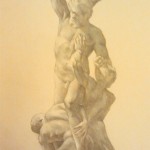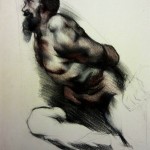I often draw in museums but whenever I go I want to make the most of my time there. I thought I’d share some of my thoughts and experiences, as well as thinking through some ideas for my next few projects.

Why draw in a museum?
Museum drawing is a very valuable learning resource.
The statuary is beautiful and stationary, the lighting usually controlled and the drawings and paintings typically the very best examples of their type.
Indeed education is one of the key aims of many museums, including The National Gallery:
The Gallery’s aim is to care for the collection, to enhance it for future generations, primarily by acquisition, and to study it, while encouraging access to the pictures for the education and enjoyment of the widest possible public now and in the future.
Extract from the Constitution of the National Gallery
Museum learning
There is a lot to learn in a museum but it doesn’t all happen by osmosis, so just wandering around awe-inspired has limited benefits.*
* Though it does have an important part to play.
Getting the most out of a museum visit requires some engagement and forethought. If you ever visited a museum or gallery on a school trip you were probably given worksheets or set tasks, to ensure that you engaged with the collection. Although let’s be honest, the things that weren’t on your itinerary were naturally far more interesting.
Why are YOU there?
It helps to know why you are there: are you looking for some answers or just looking for inspiration?
The more specific you can be here the more focus it will give to your visits. It helps to relate the aims of your visit back to some larger goals for developing your work. e.g.?
- Explore the works of one artist
- Analyse multi-figure compositions
- Look at what artists have acheived with single, non-portrait figures
- Examine different types of brushwork
- Observe the use of colour in Rembrandt’s flesh tones
- Careful studies of hands and feet
- Compositional studies
- The use of value as a narrative device
What to draw – there’s so much here?
Once you’ve considered why you are there it becomes much easier to select works related to your focus that will help you to explore further and to develop your knowledge and understanding.
It is well worth allocating some of your time for seemingly random inspiration and following whatever catches your eye/interest. The universe has a strange way of directing your attention to exactly where is needs to be (not always where you want it) so you may find that you inadvertently find your next project on a random wander.
A short wander is also a great way to take a break when you have been focussing on one drawing for a while.
Sketches vs studies vs visual notes
Having selected a focus and some works to study the next question is how to study them?
Do you copy them closely, annotate every impression, quickly sketch several parts/angles or do a colour/value study? The most daring suggestion I’ve heard is to make a small maquette of a sculpture in Fimo or similar…I haven’t been brave enough to try that….yet….
I try to relate how I study something to what I want to know; charcoal pencils or dark graphite work well for value studies. Thumbnail sketches for composition studies and obviously if you want to study colour then you’ll need at least some colour to work with.
More time
It’s worth investing some time (and by that I mean several days or weeks) in specific studies, and it’s one thing I wish I had done more of whilst I was in the Louvre. It can be hard to resist the desire to run around and draw everything, again balance is key. A couple of hours away from a longer study to make quick sketches of something which has caught your imagination is likely to be time well spent, and may be something that you return to in the future.
Museum guidelines
Most museums have guidelines about which materials you can and can’t use in their collections, where you can draw (drawing is not usually allowed in Temporary or Special Exhibitions) and even the type of stool you must use. It is worth checking before you set out.
The National Gallery issues guidelines for sketching there which seem to be widely followed in the UK.
Painting – permission
If you wish to paint, you will normally need to apply for written permission in advance and will usually need to specify which painting you wish to copy. The times at which you may work may well be predetermined.
These details can usually be obtained from the Museum’s website.



